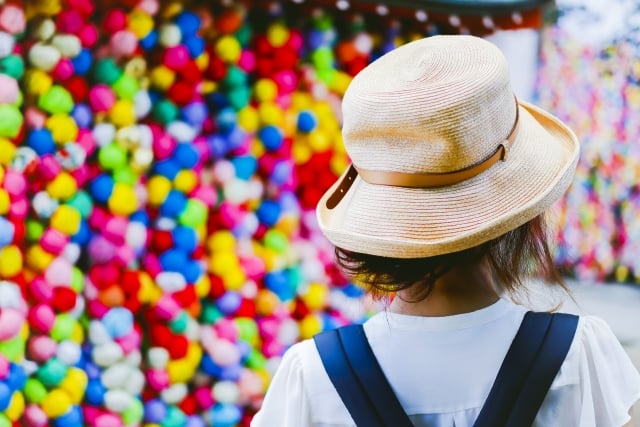Yasaka Kōshin-dō is located near Kiyomizu Temple, a popular sightseeing spot in Kyoto.
Yasaka Kōshin-dō is located near the Yasaka Pagoda, and the temple grounds are filled with colorful temari-ball-like wish monkeys called "Kukuri Zaru" ("kukuri" means "knotted" and "saru" means "monkey").
The temple is famous for its colorful and festive scene, and many people may be curious about it after seeing it on social networking sites such as Instagram.
So this time, I, a Kyoto resident, will tell you about the history and benefits of the popular Yasaka Kōshin-dō and the significance of Kukuri Zaru!
What is Yasaka Kōshin-dō? What is its history?
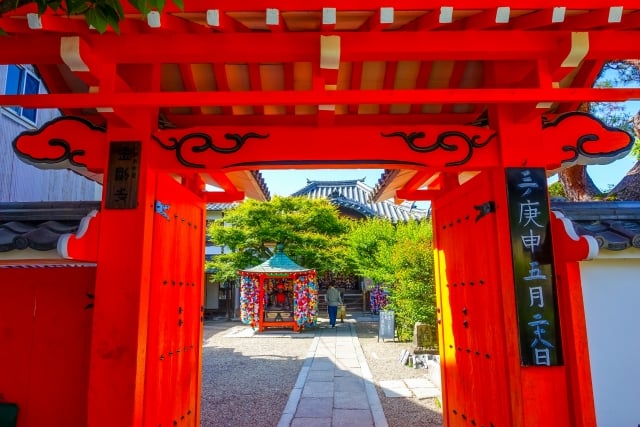
Yasaka Kōshin-dō is located in Higashiyama-ku, Kyoto, near Kiyomizu-dera Temple, a popular sightseeing spot in Kyoto.
Yasaka Kōshin-dō is a temple located near Yasaka-no-tō (Pagoda of Yasaka), the symbol of this area.
▼ Yasaka Pagoda
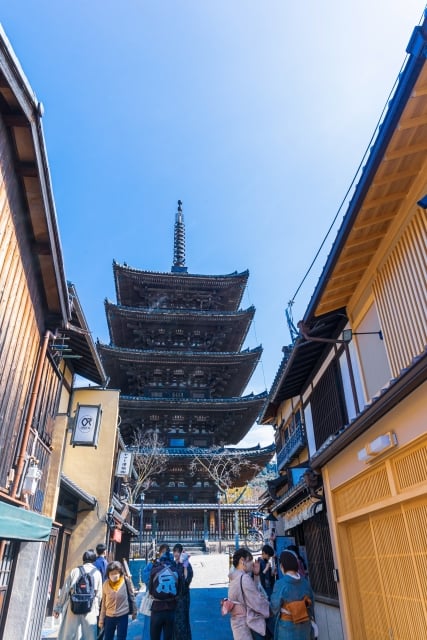
Yasaka Kōshin-dō is also a place associated with the Kōshin religion, which is closely related to Shintoism. It is considered one of the “Three Kōshin” in Japan, along with “Shitennoji Kōshin-dō” in Osaka and “Iriya Kōshin-dō” in Tokyo (which no longer exists).
Kōshin worship is a folk belief derived from Chinese Taoism.
"Kōshin Nights" happen once every 60 days. It is said that an insect called “San Shi (三尸)” escapes from a person's body and ascends to heaven to report the person's sins to the gods. To prevent the insect from escaping and reporting their sins on Kōshin night, people will stay up all night, or will hold a festival for the deity "Shō-men Kōngō" (blue-faced wrathful guardian).
“Shō-men Kōngō”, the main deity of “Yasaka Kōshin-dō”, is said to have came from mainland China during the Asuka period (593 - 710), and was enshrined in 960. In 960, the Kōshin-dō was built to allow the general public to pay homage to Shō-men Kōngō.
The main hall was rebuilt in 1679.
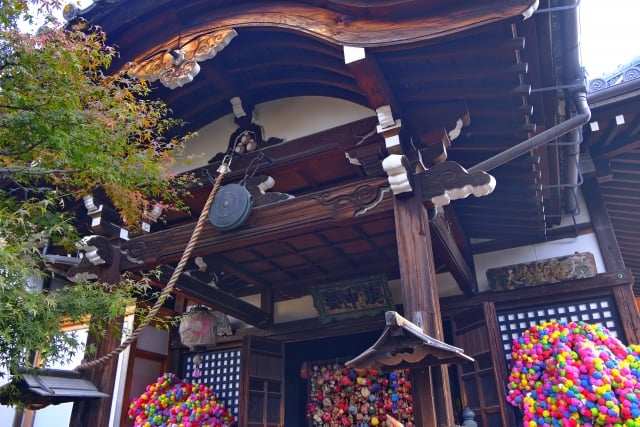
Inside the temple is a statue of the three monkeys (see no evil, hear no evil, and speak no evil) with their eyes, ears, and mouths covered by their hands, guarding the main hall.
▼The statue of “Iwazaru” (speak no evil)
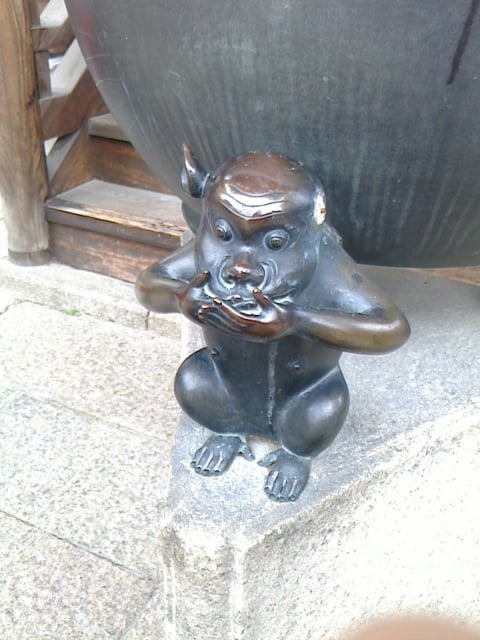
Benefits of Yasaka Kōshin-dō
Yasaka Kōshin-dō is known for an anecdote about its founder, Jozo Kisho, who revived his dead father and straightened the leaning Yasaka Pagoda with his spiritual power.
The temple is said to have cured his father's illness when he offered a konjac to pray for his father's illness, and from this story, the temple became famous for the benefit of "konjac sealing for healing illnesses."
Today, it is said to be "effective for back pain, headaches, and neuralgia" and attracts many worshippers.
Make your wish come true with the Kukuri Zaru
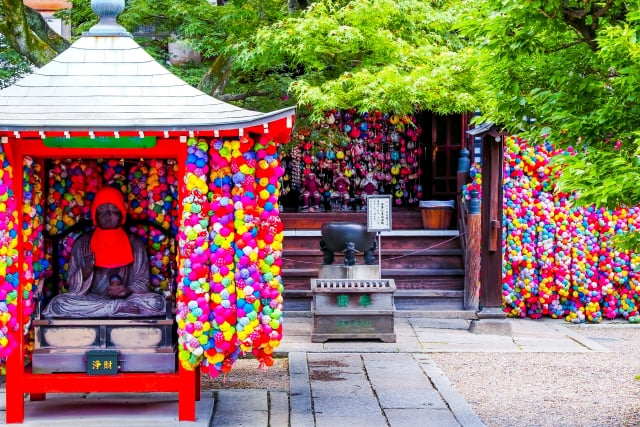
Many colorful and gorgeous “Kukuri Zaru” hang in the precincts of Yasaka Kōshin-dō.
Kukuri Zarus are symbolic of ‘monkeys’ that are bound by their arms and legs in order to prevent them from being tempted by greed. By dedicating the Kukuri Zaru, one can expect the blessing of not being driven by desire.
It will help you to control your mind when your mind starts to run like a monkey running around, and when you feel like “letting bad thoughts take over” or "slacking off on your efforts."
It is said that in order to make your wish come true, it is important to try to resist greed and turn it into motivation.
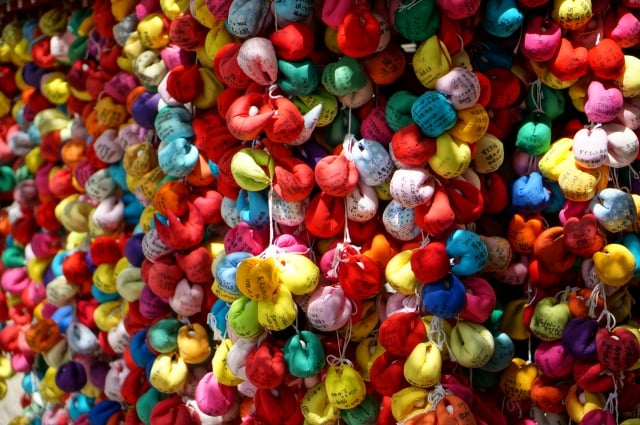
The “Kukuri Zaru” is also popular among young women because it is believed to bring good luck as a love knot charm, since the monkeys are tied together with a string when making a wish.
Each Kukuri Zaru is handmade and can be purchased for 500 yen.
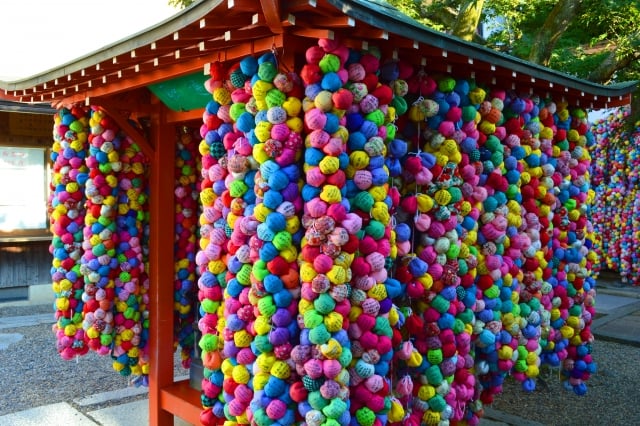
The sight of many colorful Kukuri Zaru hanging from the ceiling has recently become a popular photo spot on Instagram.
If you have not been there yet, why not take this opportunity to visit Yasaka Kōshin-dō?
Festivals and events at Yasaka Kōshin-dō
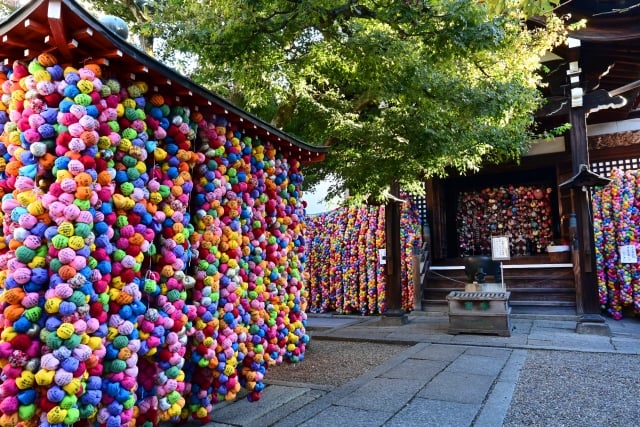
On “Yasaka Kōshin-dō”, events such as “goma-burning” and “konnyaku-burning” are held six times a year on “Kōshin-no-hi” (the day of the 57th sexagenary cycle).
The dates of “Kōshin Day” in 2025 are as follows. If you have a good schedule, you may plan to visit the shrine on the following dates.
<List of the dates of the Kōshin holiday in 2025>
February 20, April 21, June 20, August 19, October 18, and December 17.
The “New Year Grand Goma Prayer Ceremony” is held on January 6 and 7 every year, so it is recommended to visit the shrine during this period.
Let's take a picture with Kukuri Zaru of Yasaka Kōshin-dō!
Yasaka Kōshin-dō is famous for its colorful ball-like Kukuri Zaru, which are believed to cure illnesses and bring good luck. The temple is said to be beneficial for “healing illness,” “bringing good luck,” and “boosting motivation by eliminating greed.
The brightly colored “Kukuri Zaru” are beautiful and satisfying to behold, so if you are curious about them, why not pay them a visit?
Daikokuzan Kongoji Temple Yasaka Kōshin-dō
Address: 390 Kinen-cho, Higashiyama-ku, Kyoto-shi, Kyoto
Phone:075-541-2565
Opening hours: 9:00 am - 5:00 pm
Access: Kyoto City Bus “Higashiyama Yasui” stop, approx. 4 min. walk
Approx. 15 min. walk from Gion-Shijo Station of Keihan Railway
Official website:http://www.yasakakousinndou.sakura.ne.jp/ (in Japanese only)

